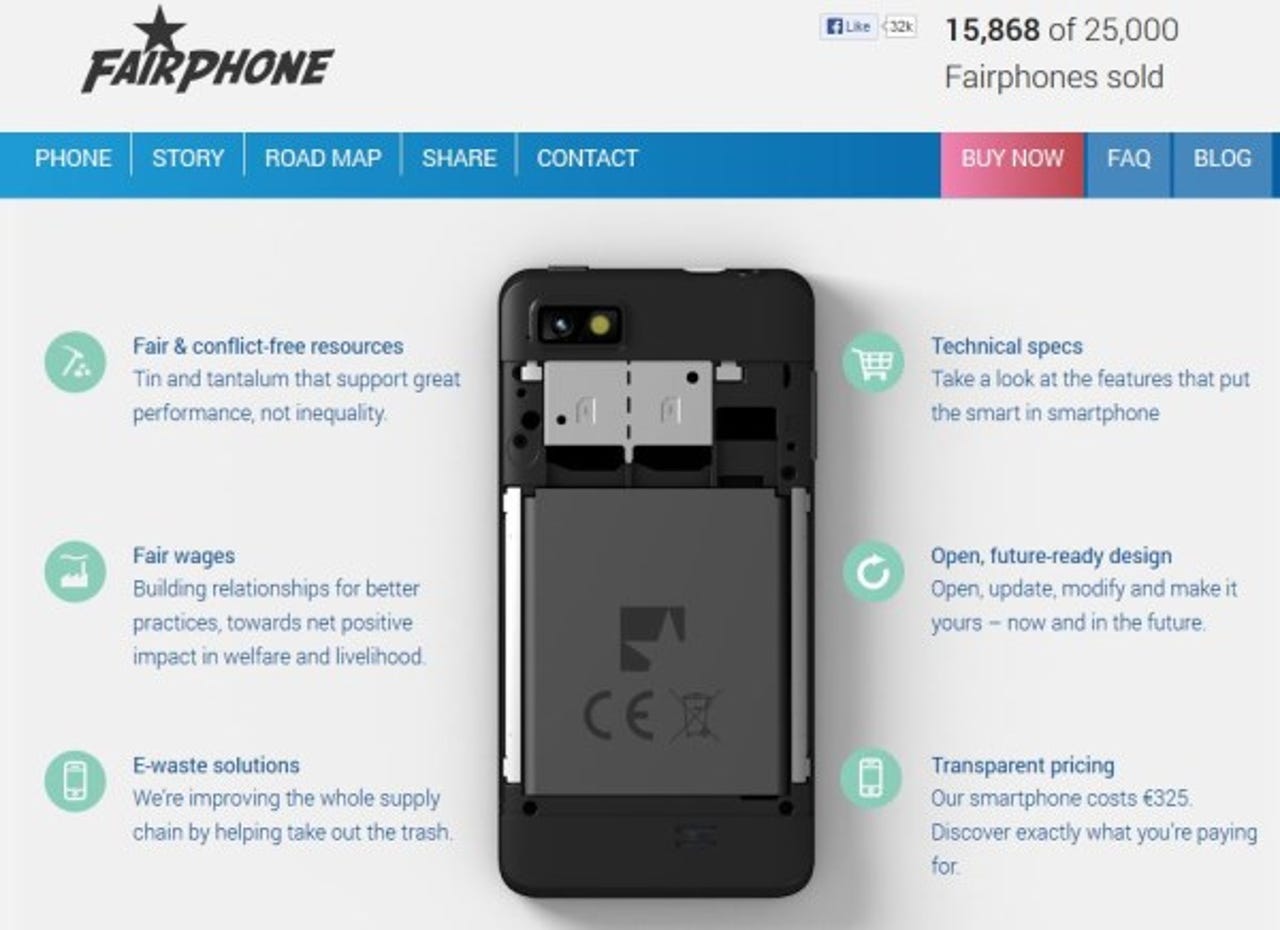Fairphone drops support for its first handset as supplies of spare parts dry up


Dutch smartphone maker Fairphone has stopped supporting its first phone, the Fairphone 1, because it can't afford to buy more spare parts.
Fairphone has attempted to buck the two-year smartphone replacement cycle by using conflict-free and fairly-trade components that can easily be replaced.
The company made 60,000 Fairphone 1 handsets after 20,000 fans pledged €325 a piece in a crowdfunding campaign, but less than four years after its debut, the handset will no longer live up to the promise of longevity through repairability: owners with a dead Fairphone 1 battery will no longer be able to buy a replacement, for example.
Additionally, Fairphone has pulled the plug on the Android 4.4 KitKat upgrade, leaving users stuck on the truly long-in-the-tooth Android Jelly Bean. Last June Fairphone said the 4.4 update would come by September, but in March it was still struggling with Bluetooth and battery drain issues.
According to Fairphone founder Bas Van Abel, the company has exhausted all financially viable avenues for sourcing spare components.
Van Abel blamed the "fast pace of change in the electronics industry" for its inventory shortfall as well as its dissolved partnership with its original manufacturer, Guohong. The pair parted ways in 2014.
"Over time, the possibilities for continuing to support the Fairphone 1 have steadily decreased. It is now clear that we can't keep spending resources on finding new options and loopholes without negatively impacting our company's future," wrote Van Abel.
"While we were producing the Fairphone 1, our manufacturing partner Guohong was managing most of the supply chain. After some time, they stopped producing phones altogether and our relationship with them ended. We had to contact the individual spare parts suppliers to ask them to produce extra batches for us. We ordered a certain amount of spare parts based on an estimate of the number of parts we would need in the near future, as well as the financial resources that were available at the time."
The company broke the news to Fairphone owners on its user forums earlier this month, citing "primarily financial" reasons for pulling support of device parts and stopping Android 4.4 development.
For owners who do need spare parts, the company recommends posting a request for the component on its community forum. Most requests listed in recent weeks are for a Fairphone 1 battery, which Fairphone hasn't had in stock since at least May.
Van Abel however claims that the Fairphone 1 was primarily aimed at using less conflict-free minerals rather than creating a long-lasting device. The was also constrained by relying an existing design. The Fairphone 2, he said, does much better on longevity through its modular design, which the company did have control over.
"Because fairer minerals were our top priority with the Fairphone 1, we decided to put our own stamp on an existing phone design. By being the first phone company to offer spare parts in our online shop and working with iFixit to create repair tutorials, we were moving towards longer-lasting devices, but it wasn't our primary objective," wrote Van Abel.
"While components reaching end-of-life will always be an industry reality, the modular design will allow us to tweak individual modules to accommodate new parts. In addition, owning the design gives us direct access to our suppliers and a better overview of what's happening in our supply chain," he added.
Read more on Fairphone
- Sustainable, modular Fairphone 2 hits pre-order
- Fairphone 2: The ethical Android handset is back with a smart modular construction
- Smart covers, new cameras: Where the world's most ethical smartphone goes next
- Brick by brick: Will modular handsets save the smartphone market, or destroy it?
- Smashed screen? This modular smartphone will let you fix it yourself
- Photos: Making the world's first fair trade smartphone (TechRepublic)
- Modular (and modular-like) phones you should know about (CNET)